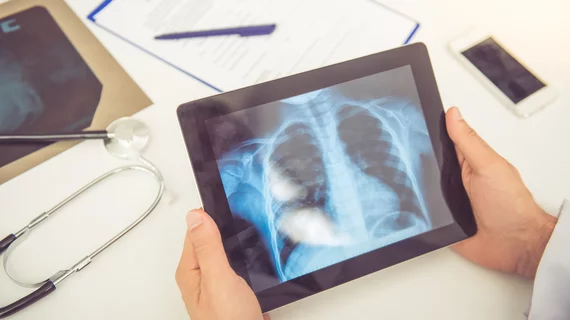Radiologists find value in the usage of interactive multimedia, such as hyperlinks, in their clinical reporting, according to new research published in the Journal of the American College of Radiology.
Though interactive multimedia is useful in radiologists’ daily practice, it is rarely used, noted lead author Cree M. Gaskin MD, of the University of Virginia Health System in Charlottesville, Virginia, and colleagues.
“Interactive multimedia radiology reporting is not in widespread use despite the reported potential to add value, improve communication, increase efficiency, and influence provider referral patterns,” Gaskin and colleagues wrote. “This may relate to limited market penetration of available technology that hybridizes viewing and reporting functions into one application.”
The researchers sought to determine if radiology providers find “enough value” in interactive multimedia reporting technology, which can be adopted into clinical practice. And if so, would they be willing to incorporate this into their daily
Gaskin et al. retrospectively reviewed more than 559,000 diagnostic radiology reports that were issued between July 2016 and February 2018. They looked for the presence of text hyperlinks that connect to imaging findings in their organization’s PACS.
The reports were further stratified by modality, reporting radiologist role and subspecialty. They average percentages of use throughout the final six months were chosen to denote established adoption rates. Adoption rates, per modality, by each reporting radiologist were:
- For CT: residents were 28 percent, fellows 20 percent and attending physicians were 26 percent.
- For MRI: residents were 27 percent, fellows 9 percent and attending physicians were 5 percent.
- For PET/CT: residents were 53 percent, fellows were 47 percent and attending physicians were 19 percent.
- Ultrasound, radiography and nuclear medicine reports saw rates of 0 to 4 percent, regardless of radiologist-type.
- Six-month average percentages of CT and MRI reports with hyperlinks to imaging findings varied from 5 to 57 percent, by subspecialty, including chest, nuclear medicine, body, musculoskeletal, etc.
The researchers determined that radiologists modified their reporting habits over time, and created interactive multimedia reports comprised of active hyperlinks.
“By the final 6 months of our study, we observed that hyperlinks were included into 49.1 percent, 25.9 percent, and 11.4 percent of PET/CT, CT, and MRI reports, respectively,” Gaskin et al. wrote.
The adoption of the new technology, they found, was dependent upon training. “Our reporting application supported the insertion of hyperlinks into reports at least seven months before the beginning of our study; however, our radiologists were not exposed to training in the technique until study month three,” the researchers wrote. “Our radiologists simply did not use it without training.”
And finally, they found that interactive multimedia reporting was adopted more among radiologists with minimal training—or residents—though attendings also “commonly created” multimedia reports.
Gaskin and colleagues concluded that radiologists do find the adoption of interactive multimedia reporting as being helpful and time-saving. However, further work will help quantify the reports’ impact themselves and answer if report consumers click the hyperlinks, if they save time and if the understanding of the reports is improved due to its multimedia, interactive facets.

